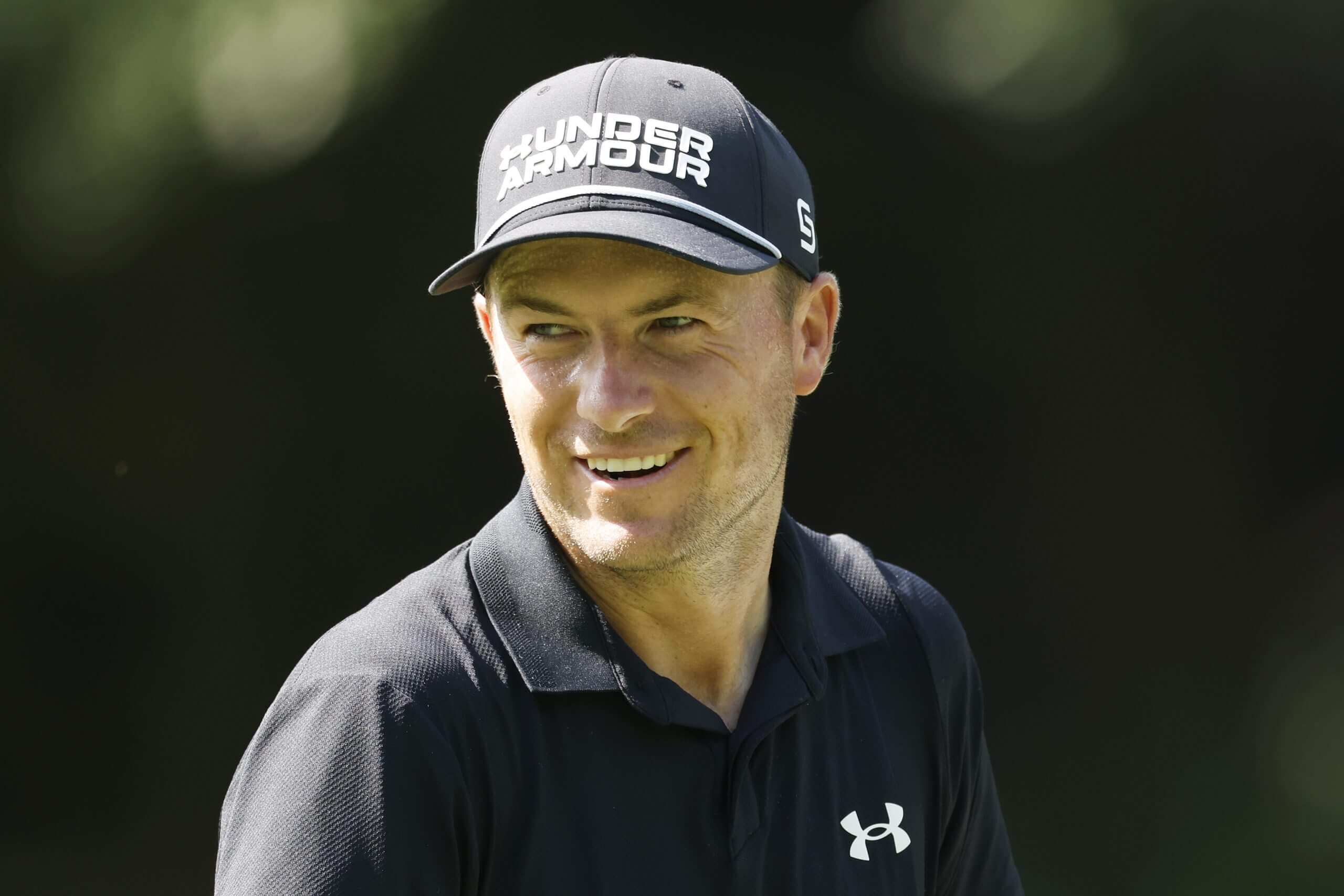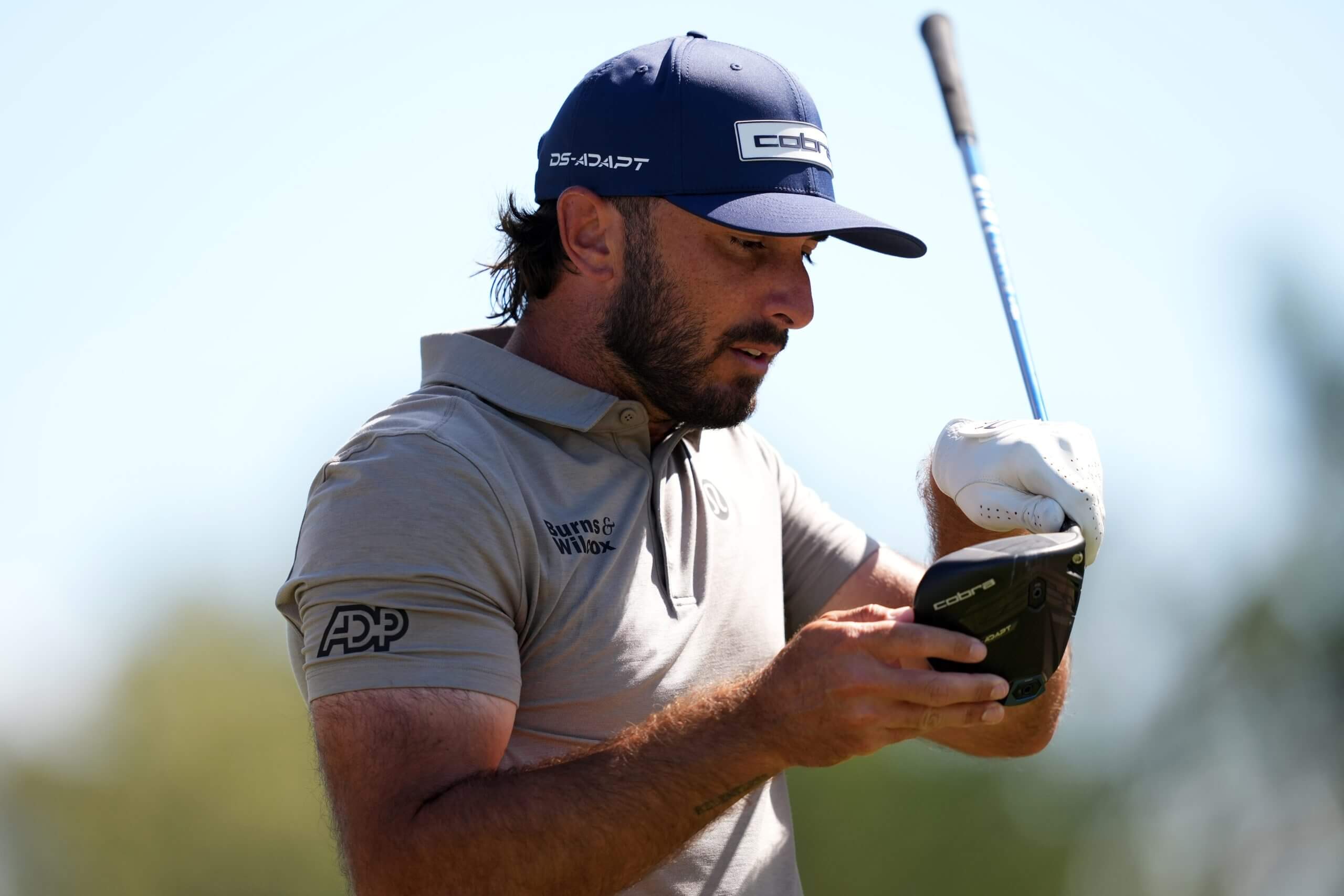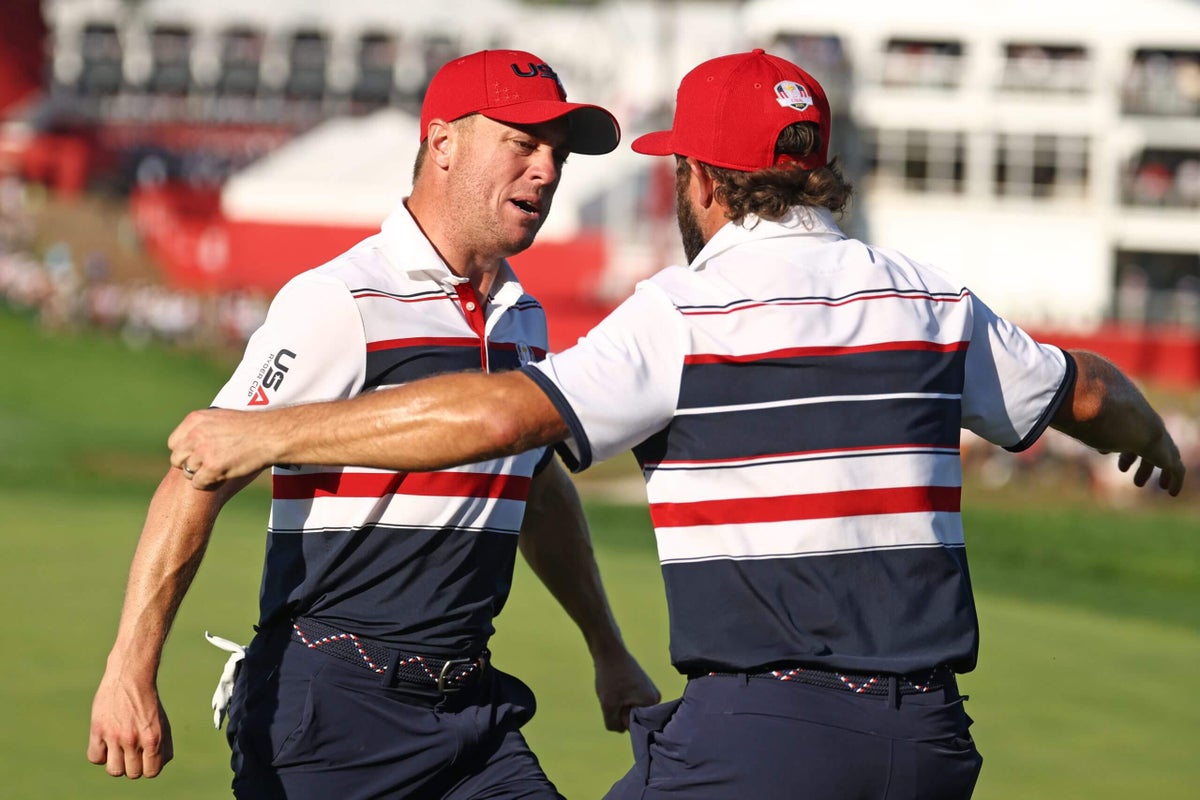Europe came into New York with, as the joke goes, the same 12 sets of DNA from Rome two years prior — 11 returning players and the twin of the 12th. It was a team of experience, savvy and a whole lot of moxie. They were made to relish going on the road and shutting up an American crowd.
What gets left out in the (important) talk of intangibles is all of those veterans were playing great golf, too. The linchpin stars, Rory McIlroy and Jon Rahm, were as elite as ever. Tommy Fleetwood elevated into that class. An aging question mark like Justin Rose nearly won two majors in the time between Cups. Robert MacIntyre went from the last guy on the team to a certified winner.
The secret sauce for this European team was the marriage between the tangible and intangible. It was a team of match play closers and the 12 best European golfers — 11 ranking inside the top 30 in the world.
It got The Athletic thinking. Not just about what went wrong in New York, but about what a winning U.S. team should actually look like. Even more specifically, what a winning team on the road should look like.
For all the pontificating about the captain’s errors and infrastructural failures, in hindsight, the U.S. simply didn’t arrive as a team in a comfortable position. The golfers in the best form were completely new to this stage. The stars who needed to be stars had lackluster seasons. Mix in the strange Cup struggles of Scottie Scheffler, and there were zero clear, obvious bedrocks for the U.S.
So here’s an exercise: Construct the ideal United States Ryder Cup team to bring overseas to Ireland’s Adare Manor in 2027.
This is not a projection. This exercise is more about trying to understand what a Ryder Cup team should actually look like and how the U.S. could win on the road, something it hasn’t done since 1993. Think of it as building the ideal team if everyone is playing their best golf in August 2027.
Spoiler: For a road Ryder Cup, we want match play dogs. Not data golfers.
The captain
No, I don’t want Tiger Woods.
He was out-captained by Ernie Els at the 2019 Presidents Cup. He takes up all the oxygen, even if unintentional. Other than the immense respect players have for him, there’s no clear trait that guarantees this belief that he is the perfect Ryder Cup captain. He deserves to be one, of course. But if I’m building my perfect team, no thank you.
In a perfect world, I want a smart, older veteran who is still intimately involved in the happenings of the game. Think of Paul McGinley’s relationship with Europe. Or even Jim Furyk for the U.S. There just isn’t an American that fits that right now, unless you think Furyk deserves another chance (valid!).
My captain? Jordan Spieth.

If Jordan Spieth is done as a Ryder Cup player, how about captain? (Johnnie Izquierdo / Getty Images)
I know, I know. Calm down. Keegan Bradley’s lack of success is not an indictment on the entire concept of a young captain. Because that suggestion implies two things. One, that Bradley’s captaincy is why the U.S. lost. It wasn’t. And two, that Bradley represents a test case for a 30-something captain. He doesn’t. He was always a quirky, self-described outsider who changed himself for the role.
Spieth is the leader in American golf. I always go back to Max Homa saying, “If Jordan Spieth leaves, we all stand on our desks and say, ‘Oh, Captain, My Captain, I’m following you.’ He’s just like the guy. He’s kind of like the North Star.” When talk of the U.S. dominating Ryder Cups started during the 2021 Whistling Straits victory press conference, Spieth was the one toning down the rhetoric, saying, “I think that this is unfinished business …It’s one thing to win it over here and it is a lot easier to do so and it is harder to win over there.”
Give me one of the most intelligent and respected individuals in the game.
Vice captains: Steve Stricker, Jim Furyk, Rickie Fowler, Brandt Snedeker
The core
OK, Scottie Scheffler is on the team, Cup struggles aside. Moving on.
Same with Xander Schauffele, who is simply a personality that doesn’t bend in these types of settings. He didn’t even play particularly great golf and secured three of the U.S.’s 13 points in a 3-1 week.
Patrick Cantlay, no matter his form, is perhaps the golfer I want on my team the most in a road Ryder Cup. It was a poor week for Cantlay, but the big picture of his career in team golf is extraordinary. He’s a dog.
Cameron Young’s showing at Bethpage solidified his place. But it’s not just a knee-jerk reaction. Young was always labeled a great, great fit for match play. His game just took massive dips at the wrong times. His incredible 3-1 showing — where he finished second in strokes gained behind only Fleetwood — confirmed that he’s the right kind of player going forward. Add in his comically muted personality, and I trust him even more on the road.
Lastly, right when people were truly ready to turn on him, Justin Thomas gained more street cred than ever in my book. After his disastrous opening session with Bryson DeChambeau, Thomas showed as much fight and clutch play as anyone in the remaining 48 hours. He won once with Young and fought tooth and nail in the emotional McIlroy/Lowry match. And his Sunday win against Fleetwood was the emotional high point of the week for the U.S. It solidified that Thomas just gets it.

Max Homa’s game has fallen off in the last year. But the Americans need him back. (Raj Mehta / Getty Images)
The comeback candidates
It shouldn’t be glossed over how many of the best U.S. Ryder Cup players of the last five years have fallen off the face of the Earth. The supposed stalwarts faded well before any age-expected decline. If the U.S. is going to win on the road, it will take one or two returning to form.
Max Homa must become Max Homa again. His past 18 months have felt as lost as anyone, but my goodness he was made for team golf. His 3-1 showing in the Rome blowout was perhaps the only true bright spot for the Americans, and his 5-2 Presidents Cup record says it’s no fluke. His game is a mess right now, but he also put himself in contention for stretches at both the Masters and the PGA Championship. It’s a lot to ask, but Homa has two years to find it. He is the template the U.S. needs.
Same for Brooks Koepka. Sure, he wasn’t great in Rome, but he’s 7-6-2 all-time and 3-0-1 in singles. He’s coming off the clear worst year of his career, yet Koepka’s career has included rises and falls. He’s just 35. It would be surprising if Koepka didn’t have at least one more resurgence.
The other two candidates here are Dustin Johnson and Spieth. Spieth is already captain, though, and at 41 years old now, it’s slightly less likely to see Johnson returning from a six-year Cup absence. Plus, we have other fun options.
The phenoms
This part can’t be overstated. The U.S. absolutely needs some of the exciting young talent to make a leap. It’s not at all why the U.S. lost, but the Americans haven’t added any fresh faces in the last two cycles. The new guys in 2023 were Wyndham Clark, 29, and Sam Burns, 27. The youngest on this year’s team was Young, 28. Gen Z golfers just aren’t breaking through. Sahith Theegala, Will Zalatoris, Akshay Bhatia and Nick Dunlap have either plateaued, gotten injured or simply fallen off.
This is surely a different story, but Ludvig Åberg of Sweden is the only world No. 1 amateur to become a top golfer in the last six years.
So in an ideal world, Luke Clanton and Jackson Koivun become no-brainers. Clanton has struggled since turning pro this summer, but the guy also had six PGA Tour top 20s as an amateur. And his replacement as No. 1 amateur, Koivun, has four straight PGA Tour top 20s as well. What I like, though, is both Clanton and Koivun carry themselves with a little bit of cockiness. Could backfire! But it could be the type of personality the U.S. needs.
The final names
Three spots to go. The first two will go to Bryson DeChambeau and Collin Morikawa.
Same. #GoUSA pic.twitter.com/Clyhl76ar7
— Ryder Cup USA (@RyderCupUSA) September 28, 2025
That’s no surprise. The bigger statement is simply that they are no longer in that “clear returner” camp. It depends on where they are in 2027. If Morikawa is playing like he did this year, you cannot bring him. He’s not a Thomas/Cantlay type who can scrap it out for points by force of will. Morikawa didn’t show up in New York. But when Morikawa is the version of himself that ranks inside the DataGolf top three at multiple points in his career, he’s invaluable in team golf as a deadly accurate, iron-twirling foursomes machine.
DeChambeau certainly played better than his 1-3-1 record showed. Kind of. It felt like he put himself and his teammates in good positions tee to green, but missed seemingly every consequential putt or opportunity. I still want him on my team at the end of the day, but he’s not so good in these settings that it forces me to pick him independent of form.
For the final spot, give me Keegan Bradley. Listen, I want that fire in Ireland. I want somebody who truly wants to beat the guy across from him, and nobody will want it more than the first captain to lose a cup at home in 13 years. Yeah, he’ll be 41, but his age 37 through 39 seasons have been as good as most of his best years. We’re looking for a certain personality type. The scene of Bradley hunting pints at the Travelers to break Fleetwood’s heart is exactly what we mean.







